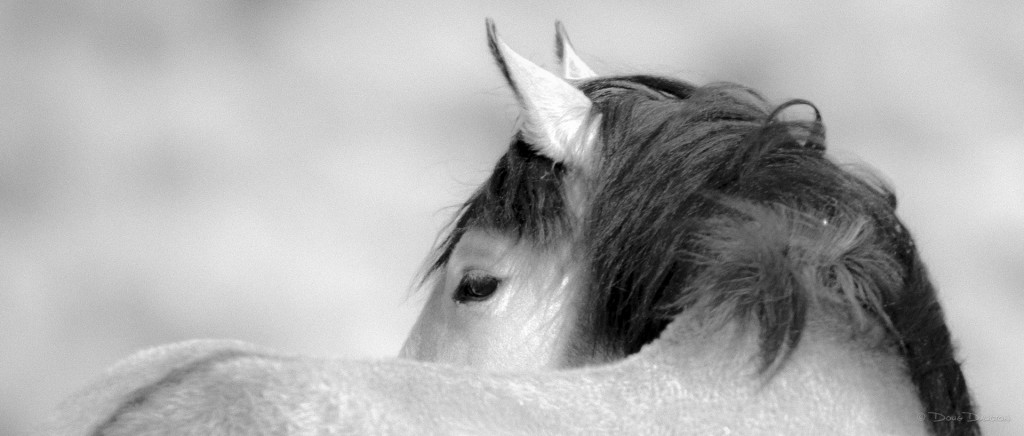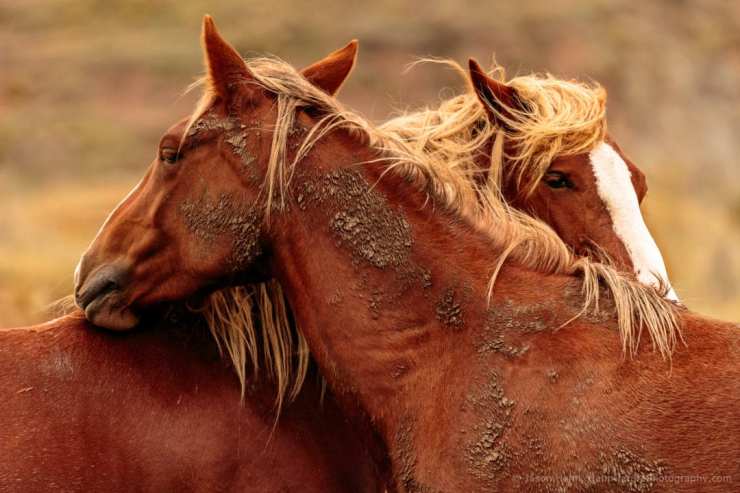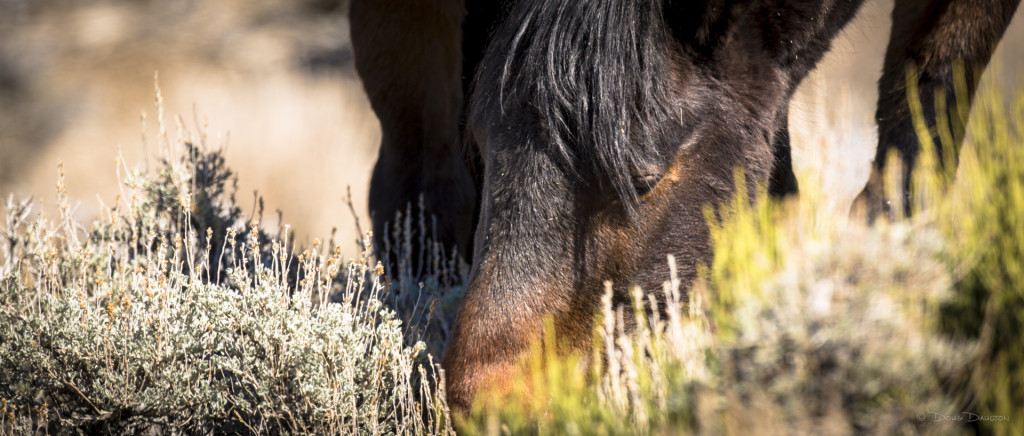I am fortunate to have several groups of wild horses and burros that live within a 20-minute drive of my home. They are one of my favorite subjects to photograph with the stark Nevada desert as a backdrop. While I did not own horses as a kid, I grew up around them and am very comfortable in their presence.
Recently, I was reminded that most folks have no idea how to behave around horses. Too often, people assume they are gentle, docile creatures and many are. But, wild or domesticated, horses are half-ton animals who are built to bolt and, if needed, defend themselves with extreme prejudice. Don’t take my word for it, watch these “horse bite” and “horse kick” videos.
With that in mind, here are a few tips on how to stay safe when photographing any horse, especially wild horses and burros.
Maintain a safe distance
This may seem like a no-brainer, but you’d be surprised how many people ignore it. I’ve seen families with small children bait wild horses with bags full of carrots. The horses approach within minutes. That might be OK if there was only one animal. But, when presented to a whole herd, with no barrier between you and the animals, things can get dangerous very quickly.
Even without being overtly aggressive, horses can step on feet or smash folks between them as they jostle for a position to eat. And, if two animals get into a squabble, teeth and hoofs can fly, with you in the thick of the fight. If that happens, you will lose.

Talk to them
Horses are built with a hair-trigger fight or flight response. You never want to surprise them. So, let them know you are there. Talk to them. If you need to approach (within a reasonable distance), softly call out “Hey fella,” “Whoa girl” or something similar. Get their attention. Chances are they will look up, assess you as nonthreatening and go back to what they were doing. If they shy away or turn their back end to you, stop in your tracks and start to back away.
Never approach directly from the front or rear
A horse’s eyes are positioned on the side of its head. Combined with a flexible neck, this gives the horse a wide range of peripheral vision. It also creates blind spots directly to the front and back of the horse.When approaching a horse directly from the front, he cannot see you until you are roughly six inches in front of his face. If you approach directly from behind, she cannot see you at all without turning her head. Approaching quietly and directly from behind is a recipe for getting kicked.
Understand the dynamics of the herd
A herd is a complex and often misunderstood family unit. For example, many assume that stallions “lead” a herd, but it is typically the senior mare who is in charge. The stallion is there to impregnate the mares and defend the family group. He knows his job and he does it well. In North America, mares typically come into estrus in the spring and summer and, if not pregnant, will cycle several times during the breeding season.

Stallions do not rut the way that many other big herbivores (e.g. bison, elk) do. But, that does not mean there isn’t any violence. The herd’s stallion keeps an eye out for small bachelor herds; small groups of younger stallions who want to sneak in and mate with available mares.
You should keep an eye out for bachelor herds as well. When they get close, epic fights can break out. You want to be safely out of the way and in the best position to capture these behaviors with your camera.
Pay attention to body language
All animals “speak”; if you learn how to listen. Most of a horse’s language is nonverbal. A great example of a horse “sentence” is head low and ears back. One will see this most often from a stallion who is chasing stragglers back into the herd. This head position is aggressive. If you see it directed at you, it is time to back away and give the horse some breathing room.
There are too many “sentences” for me to list here. This video provides a great basic overview. More resources can be found with a quick search on horse body language.
Be careful when getting low
Shooting from a low angle is a proven method of creating drama in the frame. This is true with horse photography as well. Some of my favorite portraits were taken of horses grazing or nuzzling with their heads near the ground.
When getting low around horses, take precautions. Horses don’t want to step on you. They literally live and die on the soundness of their legs. So, they will go out of their way not to step on something strange. But, if they spook and bolt, you do not want to be down low. You want to be standing where they can easily see and move around you.
How exactly to get low around horses?
How, then, does one safely get low around horses? I often shoot from under my truck, which acts as both a blind and sunshade. Another trick is to shoot from a gully or wash that puts you below the horses with your camera shooting along the ground.
One can also leave a tripod (or better still an assistant) standing up between you and the horses. In this case, you may need to work a bit to shoot around your protection, but better to have it and not need it than to need it and not have it.

Final note
As with all wild animals, it is never a good idea to bait them with food. Aside from the potential danger it presents for you, it also creates a very bad habit in the animal. If they begin to rely on your kindness, you increase the chances that they might hurt someone or get lazy and slow; both habits can get the animal killed.
Don’t worry. In most seasons, nature provides enough to sustain the animals; even in the parched deserts of the American Southwest.
Do you have a safety tip to share? Let me know in the comments below.
Tell your story with the second annual Visual Storytelling Conference!
Experience four days of interactive, online training sessions featuring a range of educational content with experienced photographers and content creators. This free event kicks off with a series of technical boot camps to build essential skills, followed by live, online sessions on photography, video, business and social media. Join live from March 10-13, 2022!
